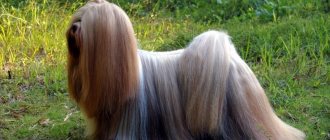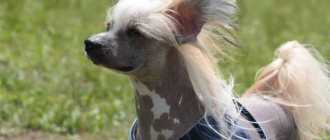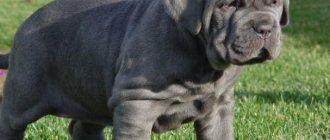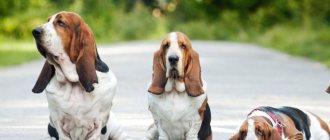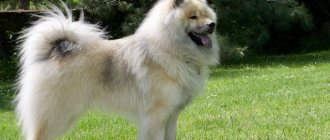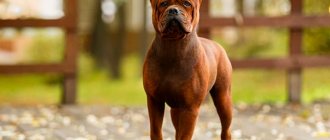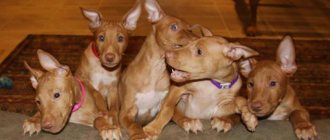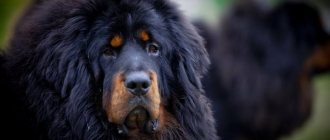- Lhasa Apso
The Lhasa Apso hails from Tibet, where it was a highly prized watchdog in the palaces and monasteries of its mountainous homeland. Today, this is no longer a palace guard, but first of all a companion who faithfully protects his family from danger. Despite its small stature, the Lhasa Apso is a strong and independent dog.
- Country of origin : China (Tibet)
- Height at withers : female: 25–28 cm, male: 25–28 cm
- Weight : female: 5–7 kg, male: 6–8 kg
- Lifespan : 12-14 years
- Use : dog companion
- Other names : Lhasa Apso
Purchasing a Lhasa Apso puppy is a responsible and important act that you need to think carefully about before you do it. This is especially true for those people who are going to become truly responsible dog breeders. The question of choice should be approached carefully and without haste, comparing your own habits, daily routine and the nature of the chosen breed. When the future owner has decided on the breed, a new dilemma arises: how to find a bona fide breeder? Here you need to be extremely careful not to become a prematurely disappointed dog owner.
Buying a Lhasa Apso puppy is a very exciting event, because you can say that a new family member will appear. To ensure that the event does not overshadow anything, it is worth taking a responsible approach to choosing a breeder. There are no bad dog breeds; you can simply run into an unscrupulous breeder for whom money comes first. The future owner is at great risk of buying an animal that has a lot of health problems. It is for this reason that you need, first of all, to get to know the breeder well, read reviews about him and the like.
Dog kennel Avgit. Lhasa apso
| Description: | The nursery was founded and registered in 1998 with the FCI. Initially, work in the nursery was carried out with the Chow Chow breed. More than 20 years have been dedicated to this wonderful breed. And for more than 5 years, the nursery has been purposefully promoting the Lhasa Apso breed. The basis of our nursery is the blood of leading nurseries in Europe: Kutani (England) Whisborne (Sweden), Tintavon (England-Sweden) Titling (Slovenia), Ah-Tib (Sweden), Pibaro (Czech Republic). The results of systematic breeding and exhibition work with the breed are the achievements of our dogs; they have repeatedly become winners and prize-winners of various ranks of prestigious exhibitions. The main goal of the nursery was and remains to obtain high-class dogs with good health, temperament, harmonious build and breed type. We are always open to communication, exchange of information, help and sincere friendship, both with potential owners and with a wide range of positive and passionate people |
| Contacts: | +7(916)6785678 |
Diseases and their prevention
Lhasa Apso are aboriginal dogs, so representatives of this breed have excellent health and a balanced psyche. Animals are considered long-lived, and some specimens manage to overcome the twenty-year age limit, which is a rather rare occurrence for dogs.
Table: diseases of Lhasa Apso
| Disease | Description of the disease | Treatment |
| Patella dislocation | Dislocation occurs when intrauterine development is disrupted. A puppy may look completely healthy, but be prone to sprains. In advanced cases, the dog is unable to lean on the injured paw | The problem can be partially solved by reduction or surgery followed by treatment. The animal should be protected from excessive physical exertion, since an increased tendency to dislocation remains even after surgery. |
| Hip dysplasia | The disease is congenital, but the first symptoms appear after 15 months. Begins to manifest itself in the form of limited movement, pain, and can lead to absolute immobility | For dysplasia in dogs, treatment with medications includes prescribing medications to regenerate joints and reduce pain. During the treatment period, physical activity is not excluded for the dog, but it should be moderate |
| Atrophy and luxation of the lens | A hereditary disease manifests itself in disruption of the photoreceptors of the eye. The first symptom is decreased vision in the dark. Lens luxation is a complete or partial displacement of the lens from its normal point due to congenital underdevelopment or weakness of the zonules | Treatment depends on the potential preservation of vision in the damaged eye, the presence of glaucoma, and the location of the lens. Therapy is aimed at treating the underlying disease, reducing intraocular pressure, surgical removal of the lens in case of anterior dislocation |
| Heart murmurs | Abnormal sounds that occur as blood passes through an organ. May be part of many diseases | Noise as such cannot be treated. The cause of the noise may or may not be treatable - it depends on the type of pathology, the degree of its severity and other circumstances (age, condition of the animal, concomitant diseases, cost of treatment, etc.) |
| Cataract | An eye disease that develops mainly in older dogs and is accompanied by clouding of the lens of the eye | The intensity and need for therapy is determined by a specialist |
| Renal dysplasia | An extremely severe pathology associated with a violation of the functional division of organ cells. With this pathology, the kidneys lose their ability to filter blood and synthesize urine. | Complex drugs and painkillers are used for treatment. If treatment does not help, veterinary intervention will be required. To prevent kidney disease, you need to follow a low-protein diet and walk your pet for a long time every day. |
| Allergy | An abnormally increased reaction of the body to some foreign substance that has entered it by any means | The appropriate medicine can relieve itching and other symptoms for a short period of time, but for effective treatment it is necessary to correct feeding, and in case of atopic dermatitis, improve maintenance at home |
Dog kennel Lidgers Crown. Jack Russell Terrier, Lhasa Apso
| Description: | We specialize in the Jack Russell Terrier and Lhasa Apso breeds: - they get along well with adults and children, quickly adapt to new conditions, they are genetically free of aggression towards people, they are well trained, wonderful hunters, companion dogs, and actively participate in life person. We get a huge boost of energy and positive emotions from communicating with our pets! We actively participate in exhibitions and competitions. All our dogs are socialized and we love them. |
| Contacts: | Stanislava, tel.*(916)604-11-05 |
History and description of the breed
Cute fluffy creature - Lhasa Apso. The photo shows a small dog with long hair. The Lhasa Apso arose completely without human intervention , thanks only to natural selection.
How is the Lhasa Apso different from its fellows? The description of the breed was compiled by dog handlers in great detail. Quite often they are confused with the Shih Tzu, but this is a completely different breed, although it also has long hair.
- The stocky figure of miniature animals (their height does not exceed 25 cm) is almost completely hidden under thick fur.
- The weight of the dogs is from 4 to 7 kg. The legs are strong and short. Appearance resembles a Tibetan terrier.
- The muzzle is square in shape and has fur growing on it (like a beard). Many people notice the similarity of this breed with the Shih Tzu, but the latter have a more rounded head.
- Oval eyes, drooping ears.
- The body is muscular, the chest arches back.
Some of the most important characteristics are the bite (it is reversible), color and coat quality. If the judge finds faults, the dog is discarded. Another sign by which you can distinguish a Shih Tzu from a Lhasa is the tail. In the Shih Tzu it is held high, resembling the handle of a teapot. Their brothers throw their tails over their backs.
The coat is very hard and thick, the undercoat, on the contrary, is very soft. This “robe” protects the breed from the hot rays of the sun during the day and during cold nights. The hair must be straight; waves or curls are a waste. The fur on the face forms thick eyebrows and a beard. Daily brushing is required . A show class Lhasa Apso must have long hair. Only those dogs that do not participate in competitions can radically change their hairstyle. A domestic Lhasa Apso can look however its owners want - sometimes only the face is trimmed, sometimes the entire body is trimmed.
Possible colors:
- beige-fawn;
- golden;
- grey;
- tortoiseshell;
- black and white with reddish inclusions.
Lhasa apso
Breeding dog kennel "Priceless Heritage". Caucasian Shepherd Lhasa Apso
Take the Attention Test! Find 10 differences! (click right here!)
Find the answer Are you bothered by some problem or question? Enter “Breed” or “Name of the problem” into the form, press Enter and you will find out everything about the issue that interests you.
https://dog-care.ru/porody/pitomniki/sobak-lhasa-apso-v-moskve.html
| Description: | A breeding kennel specializing in breeding the following breeds: Caucasian Shepherd Dog, Lhasa Apso. Our dogs have Russian Champion titles, excellent conformation and personality. The nursery's puppies find their owners both in the CIS countries and abroad. |
| Contacts: | 7201493 |
| Description: | Small with luxurious fur that never sheds or smells, loyal and gentle, distrustful of strangers, long-lived, messengers of peace and prosperity. The Lhasa Apso is a sacred dog - a symbol of happiness, power and wisdom, a living talisman that helps prevent and ward off trouble. Well, everyone knows everything about Yorkies. |
| Contacts: | 127490 Moscow Musorgskogo 11-b-40 8-910-413-82-95 |
Character
Despite their small size, Lhasa Apsos have been successfully used as guard dogs. Thanks to their sensitive hearing, the dogs picked up the slightest sounds. Their loud barking let the mastiffs know that a stranger had entered the territory. Thanks to their increased sensitivity, these animals are now able to warn their owners about an impending natural disaster.
Main character traits:
- equilibrium;
- cheerfulness;
- confidence;
- vigilance and distrust of strangers.
Such qualities make representatives of the Lhasa Apso breed excellent companions . The owners of Lhasa have especially warm feelings - they do not want to part with it even for a minute. Loyalty is their defining characteristic. Lhasa puppies are very trainable and use their intelligence to serve their humans. But owners need to be patient, because independent animals do not tolerate rudeness. They will interact only on equal terms. They adore children , but they should not be allowed to squeeze the animal uncontrollably and drag it by the tail - the dog may become indignant.
Nutrition
From an early age, you can get used to dry food . A prerequisite for this is a sufficient amount of clean drinking water in the bowl. Otherwise, nutrition may have side effects in the form of salt deposits. To avoid the accumulation of excess fat, you need to give your pet a good walk before going on a walk - this breed is prone to laziness.
Before adopting a dog from the kennel
Any pet with character and emotions. Call a friend who already has an animal if you have not interacted with animals. Relatives may have a negative attitude towards the decision to adopt a dog - convince them and get their consent. Walk the dog yourself, or arrange with relatives. Remember, the dog is usually walked 3 times a day. If you have children, they should be able to get along with animals. Teach them not to hurt your pet. The child should not touch the pet when she is eating or sleeping. You cannot scare or shout at the animal.
Where to buy a puppy
If you just need a pet, it is quite possible to purchase a puppy not from a kennel. But it is still desirable that the parents belong to the club and have a mark - this is evidence that the representatives of the breed did not have critical deficiencies in mental and physical development.
However, if you want to breed and sell offspring, you should definitely contact a nursery, a professional. They will help you make a choice and tell you about all the advantages and disadvantages of each puppy. Most serious breeders do not sell dogs to just anyone. They ask questions about whether the person has experience in keeping, what the conditions will be (how much free space in the apartment, whether they plan to attend training courses, exhibitions, etc.).
Nurseries have websites on the Internet - they are easy to find. Even if the breeder is located in another city, he usually has a well-developed delivery system. You can always agree on transportation with a regular bus driver or a railway employee. Before purchasing, it would be a good idea to read the reviews and look at the living conditions of the animals with your own eyes. If dogs look thin, unhealthy, dirty, this is a reason to be wary. Documents and vaccinations are required. Many breeders give their “graduates” toys and a small supply of the usual food.
The first thing to do
Plan when you will take your dog for vaccinations. Bring toys for him to play with. Prepare a place and train your pet to this place. Necessary things:
- Dry food,
- clothes,
- Shampoo,
- Oral hygiene product,
- Brush (comb),
- Claw clipper.
If you want to add your organization, fill out the form below: Indicate the name of the nursery, its description and provide contact information. We will be glad to add you to our directory.
Education and training
To raise and train a Lhasa Terrier, the owner needs patience and good experience working with dogs. The thing is that these dogs need a firm hand and a clear delineation of rules. A spoiled Lhasa Apso will gladly take on the role of head of the house, and this is fraught with problems.
These dogs are smart enough to understand their owner's commands, but are too independent and stubborn to carry them out. Therefore, persistence during learning is usually required. But aggression is absolutely prohibited! The dog will definitely react to it with the same cruelty.
Another important point is that the Lhasa Apso must be trained by its real owner, in whom she has unlimited trust. The dog is unlikely to take all other family members seriously. Training can be based on the principle of a game. If the animal is enthusiastic, then the process of remembering commands and their implementation will become simple.
Health
Like any other dog breed, the Lhasa Apso is prone to certain diseases:
- hypothyroidism and other autoimmune diseases,
- progressive retinal atrophy,
- kneecap displacement,
- Perthes disease.
Preventive measures to protect your Lhasa Apso puppy
- To keep your Lhasa Apso puppy completely safe, you first need to minimize his contact with unfamiliar dogs, especially strays. Therefore, you should not let your dog off the leash, as in this case it will become impossible to control its behavior and communication with other dogs. Since a dog can easily become infected with distemper from simply touching the nose of a sick animal. This disease can be transmitted to a dog through sniffing. Your dog can become infected with trichophytosis from contact with the lichen-affected fur of a sick dog. Naturally, it is impossible to completely exclude a dog’s communication with other dogs, since it must be socialized. Therefore, try to find friends with dog lovers who look after their animals. By adhering to this rule, you can eliminate the risk of pathogen transmission by 80%.
- You should walk your dog in places where there are no landfills. Since garbage very often attracts rodents, which in turn are very often carriers of various infections. Gray rats are especially dangerous because they carry such a serious disease as leptospirosis.
- You should not allow your dog to sniff other people's feces, as they are a source of worms.
- Monitor the health of your Lhasa Apso. Pay attention to even the most minor changes in his behavior. For example, your dog may appear lethargic, lose his appetite, or have a dry nose. Or you may notice that the dog begins to shed, and this has nothing to do with seasonal shedding. If hair loss becomes excessive, this is the first symptom indicating health problems in your pet. And only you can help him. Therefore, it is important to take the dog to the veterinary clinic in time, where the disease can be overcome for sure. In no case should you ignore the symptoms, since advanced infections are much more difficult to treat, and sometimes even impossible. If you start treating your dog, the disease can lead to his death or he will develop serious complications that will affect his hearing, vision, limbs and much more.
Feeding
Since the breed requires a very large amount of nutrients for normal development, and young Apso puppies are known for being picky, experts recommend feeding the animal with professional food designed to meet all needs. In this case, it is enough for the owner to follow the dosage and provide the dog with constant access to clean water.
Those who prefer natural nutrition will have to combine a large number of different products in their diet. The most important among them: lean meat, cereals, cottage cheese, fermented milk products, vegetables, non-acidic fruits. Salt, sugar, potatoes can seriously harm the body of the Lhasa Terrier, so it is not recommended to give them.
The number of feedings for an adult dog should not exceed 3 times. Young puppies can be fed more often. When buying products, you must ensure that they are completely free of preservatives, dyes and other chemicals. Additionally, you can purchase vitamins to maintain your dog’s health, but this issue is best resolved with a veterinarian.
Briefly about the main thing
- The breed is one of the most ancient on the planet and it originates in the mountains of Tibet. From the very beginning of their spread across the earth, these dogs were pets and companions;
- The Lhasa Apso is a small breed. The height of both sexes does not exceed 27 cm, and the weight is 6-8 kg. The breed’s special pride is its luxurious long coat with a soft undercoat;
- Dogs of this breed are very friendly and loyal to humans, but it is not recommended to have them in families with small children;
- Apsos are intelligent and can quickly master any exercises offered during training, but their somewhat stubborn temperament and independence will require patience from the owner;
- Representatives of the breed are susceptible to hip dysplasia, diseases of the eyes, kidneys and skin, so special attention should be paid to the limbs, eyes, condition of the coat and skin;
- A large part of caring for a pet consists of the need for constant care of the coat;
- Apsos can be picky when it comes to nutrition, so it’s easier to feed them professional food;
- Before buying a baby, you should definitely get to know its parents, since dogs are susceptible to hereditary problems.
